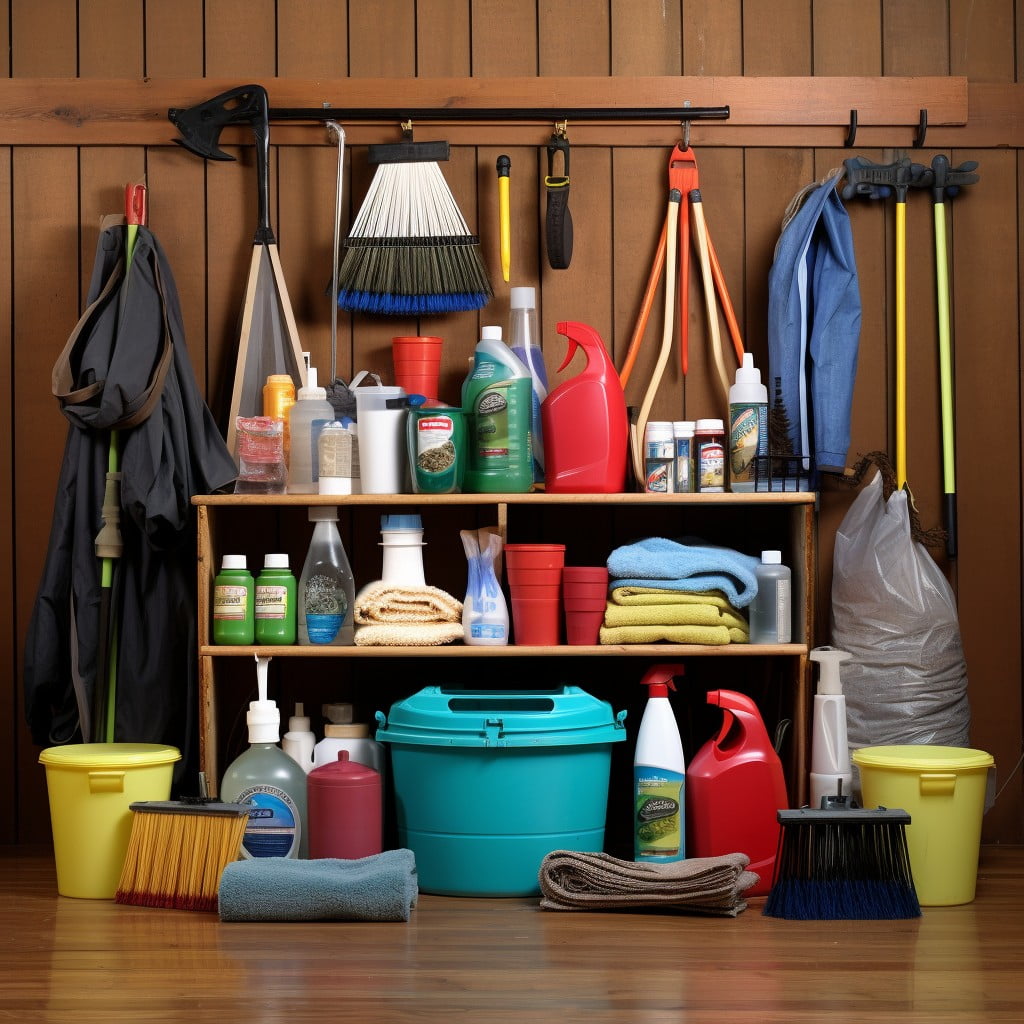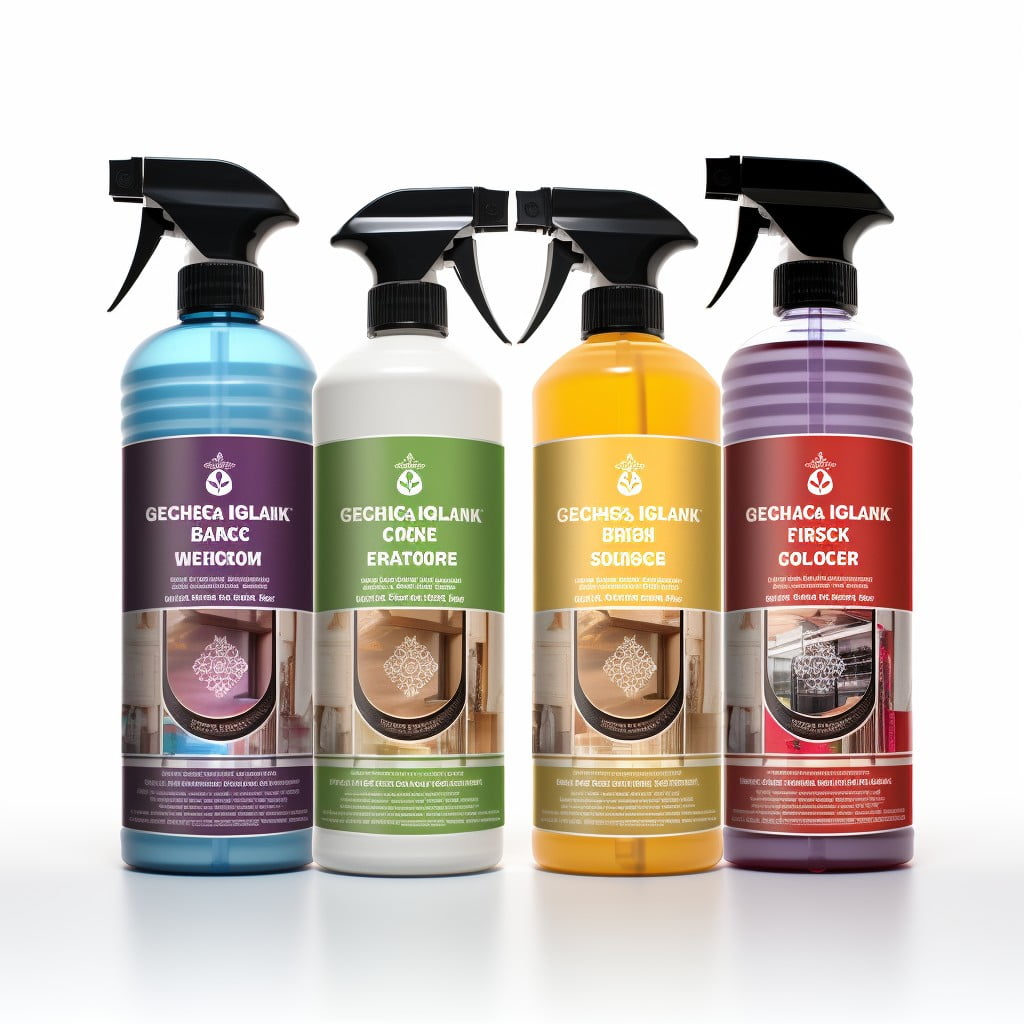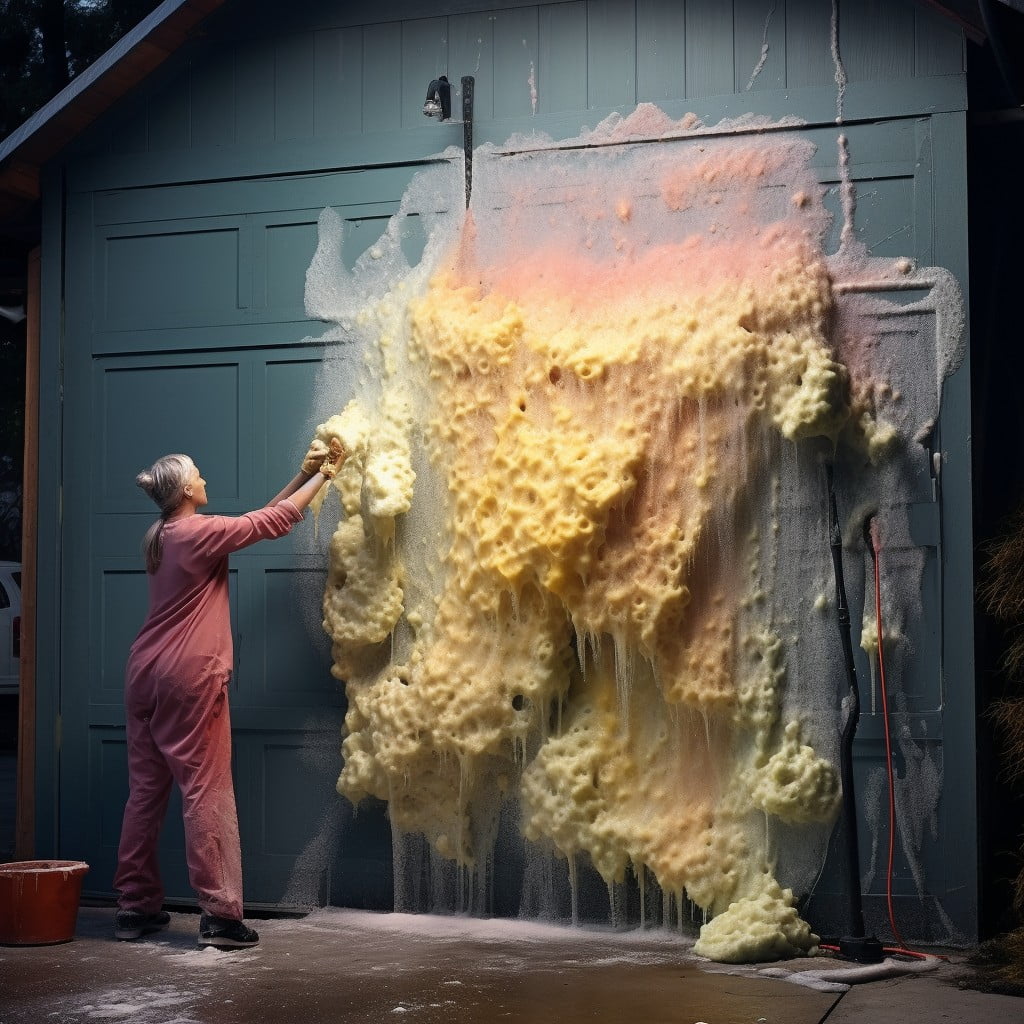Discover effective methods to keep your garage door clean and well-maintained, enhancing its longevity and curb appeal.
Cleaning a garage door is not as daunting a task as it may seem. With the right tools and techniques, you can easily restore your garage door to its former glory.
This article will guide you through a step-by-step process, from gathering the necessary cleaning supplies to applying the correct cleaning techniques for both the interior and exterior of the door.
Whether your garage door is made of wood, steel, or aluminum, this guide has got you covered.
Read on to discover the best practices for maintaining the cleanliness and longevity of your garage door.
Key takeaways:
- Gather your cleaning supplies: soft sponge, bristle brush, bucket of warm water, mild detergent, garden hose, rubber gloves, glass cleaner, soft towel.
- Choose the right garage door cleaner based on the material.
- Pre-rinse the garage door to remove loose dust and dirt.
- Apply soap using a sponge in a gentle circular motion.
- Rinse off the soap with a garden hose, starting from the top.
Gather Your Cleaning Supplies

Having the right cleaning supplies on hand is crucial for a thorough job. You’ll need a soft sponge or cloth to avoid scratching the surface of the door. For stubborn stains, a soft bristle brush may come handy. Prepare a bucket of warm water, mild detergent, and have a garden hose ready for rinsing. Don’t forget a pair of rubber gloves to protect your skin from drying out due to the detergent. If your garage door has windows, you’ll also need a glass cleaner. Lastly, have a soft towel or chamois with you for drying to prevent water spots.
Choose the Right Garage Door Cleaner

There is a variety of cleaners that you can use to spruce up your garage door, their effectiveness will usually depend on the material of the door itself. Aluminum doors can be cleaned with standard car wash soap, making the process easier and more affordable. Vinyl doors are less forgiving and may require a multi-purpose cleaner to adequately remove dirt and smudges.
Wooden doors, often the most aesthetically pleasing, demand more specialized care. It is recommended to use a mild detergent or a specially made wood cleaner for these types of doors due to their sensitive nature.
Lastly, it’s important to avoid abrasive materials like bleach that can potentially damage your garage door. By choosing the right cleaner, you are giving your garage door the gentle, yet effective care it needs to stay looking its best.
Pre-rinse the Garage Door

Before introducing any cleaning agents, remove all loose dust, dirt, and debris from the surface of your garage door. Utilize a garden hose with sufficient pressure, but avoid pressure washers as they might damage your door. Spray from top to bottom, following the direction of door paneling to ensure everything is removed from its grooves and crevices.
Pay extra attention to corners, edges, and decorative elements, these zones are often home to the most stubborn grime. With a quick, yet efficient pre-rinse, your door will be prepared for the next step. Remember that removing as much dirt in this stage will make the rest of the cleaning process smooth, and will prolong the life of your cleaning sponge or cloth.
Apply Soap Using a Sponge

After you’ve prepared your door by rinsing it, it’s time to get down to the business of scrubbing. Start at the top of the door and work your way down. This ensures that any dirt or grime that is dislodged and runs down the door will be cleaned away. Using a soft sponge or cloth, massage the soap into the door in a gentle circular motion.
Be generous with your soap but avoid causing excessive dripping since it can leave unsightly streaks. Soap serves a dual purpose, it cuts through any grime and it offers a layer of protection against potential scratches while scrubbing.
Remember to pay attention to the detail areas such as the frame, windows, and any decorative elements. Dirt can get trapped in these spaces and might need a little extra elbow grease.
Don’t rush the process. While it might be tempting to scrub quickly and use a lot of pressure, going slow and using a light hand will prevent any potential damage to the door’s finish.
Once you’ve finished one section, rinse it to help keep the soap from drying and leaving a residue. Then proceed to the next section. This method ensures every part of the door gets an even, thorough cleaning.
Rinse Off With a Garden Hose
After applying soap to every nook and cranny, the next crucial step is the rinse. Ensuring all the soapiness gets off is paramount to prevent residual soap from drying and leaving unsightly streaks. Use a garden hose for an effective rinse.
Here are a few things to keep in mind:
- 1. Begin at the top, aim the hose downwards to avoid water getting into cracks or crevices. Remember, water can lead to rust in these areas.
- 2. Use a spray nozzle to control the water pressure. You don’t want it too strong, as it might damage the door, but strong enough to get all the soap off.
- 3. Be thorough. Check for any suds left behind, especially in hard-to-reach areas. Missed spots can leave unsightly residue.
- 4. Try not to spray water directly into the garage, especially if it’s filled with tools, equipment, or other valuable items.
Remember to take your time in this step to ensure a clean and spotless garage door.
Wax and Dry the Garage Door
After a meticulous washing, the next step is vital to keeping your garage door in tip-top condition. Applying a wax not only adds a sleek, stylish shine but also forms a protective barrier. This barrier serves dual purpose: it wards off harsh weather conditions and reduces the likelihood of dust accumulations.
Here is a simple procedure:
- 1. Select a good-quality car wax. Your garage door, much like your vehicle, benefits from using a similarly formulated product.
- 2. Apply the wax evenly using a soft cloth. Ensure to cover all areas, including edges and corners. A brush might be useful to reach tricky areas.
- 3. Allow the wax to sit as per the instructions on the product label.
- 4. Once the wax has settled, use another cloth—preferably microfiber—to buff the door till it gleams.
Remember, a good drying process is equally essential. Avoid air-drying; instead, use a dry towel to prevent water spots from appearing once the door dries. Blot the water off gently, staying cautious not to scratch the door’s surface. This easy yet crucial step allows your garage door to maintain a lustrous, new appearance, extending its life in the process.
Lubricate the Weather Stripping
Once the door and its frames are clean and dry, the next step involves taking good care of the weather-stripping. This crucial component of your garage door prevents elements like rain, snow, and dirt from getting inside the garage when the door is closed.
Start by wiping down the weather-stripping with a soft cloth to rid it of small bits of debris and dust.
Then, it’s time for lubrication. Select a silicone-based lubricant as it repels water, won’t harden or freeze in low temperatures, and it doesn’t attract dirt. Spray the lubricant lightly along the entire length of the weather stripping. Do not overdo it, a light misting is sufficient.
Finally, wipe off any excess lubricant with a clean cloth. This process should be repeated every six months to ensure the weather-stripping stays in tip-top shape. By doing so, you can significantly extend the life of this vital part of your garage door and keep your garage well-protected against the elements. Proper care of the weather stripping can also result in smoother functioning of the door all year round.
Clean the Interior Side of the Garage Door
After taking care of the exterior, it’s time to focus on the interior part, as it too gathers grime and dust over time. Begin by dusting off trails of dirt using a soft cloth. For stubborn stains, use a mild detergent mixed with warm water. Make sure to avoid soaking the door too much as this may cause material damage. Rinifillng it out thoroughly afterwards is essential. Avoid using abrasive tools, as they can leave unwanted scratches.
In the case of a steel garage door, applying a car wax can protect it from dust and dirt retaining onto it. For wooden doors, a simple wood cleaner would be sufficient. Always remember to wear gloves and safety glasses to avoid any unexpected harm. Lastly, wipe down the door with a dry cloth to prevent water spots from forming, giving the door a clean and glossy finish.
Prevent Rust By Regular Cleaning
Keep your garage door operating smoothly and looking sharp with regular cleans. Clear dust and debris to avert its build-up. This routine not only keeps the door presentable but also plays a vital role in keeping rust at bay. Rust is a garage door’s enemy. Moisture, coupled with dust, is a perfect breeding ground for corrosion to develop.
Keep an eye out for signs of rust during your regular cleanups. Don’t ignore even small patches. Left unchecked, these can quickly grow into a significant problem that may require replacement of some door parts.
If you do notice any rust, tackle it immediately. You can use a mixture of baking soda and water for scrubbing the affected area lightly. Rinse well and dry thoroughly afterwards. Always remember – prevention is better than cure. Regular cleaning is a simple habit that can save you from costly repairs in the future.
Clean Special Types of Garage Door Windows
Diverse window types require unique cleaning approaches. For frosted or tinted windows, avoid harsh chemicals as they could damage the finish. Simply a mix of mild dish soap and water usually does the trick.
Similarly, leaded or stained glass windows can be sensitive, so gentle hand cleaning is preferred to preserve the vibrant colors. Ensure to dry these windows thoroughly to avoid water spots.
In case of specialty materials like plexiglass, prevent scratching by using a soft cloth rather than abrasive pads. Keep in mind, always check your manufacturer’s guidelines before cleaning to keep the warranty intact.
Remove Mold and Mildew On Garage Door
Mold and mildew, apart from being unsightly, can weaken the structural integrity of your garage door, and they’re not exactly a friend to your health either. Eradicating them can thus prove vital to the well-being of both your garage door and yourself.
First things first, wear protective gear, such as gloves and a face mask, to sidestep potential health risks. Dilute white vinegar with an equal part of water to create a natural remedy. Spray the solution generously on affected spots and allow it to sit for about an hour. This enables the vinegar to penetrate and kill off the mold and mildew.
Afterward, use a soft sponge or cloth to scrub the saturated areas. In most cases, this method will suffice. In the event some stubborn spots linger, a commercial mildew remover can deliver stronger cleaning power. As with any heavy-duty cleaner, remember to follow the manufacturer’s safety and usage instructions.
Finally, rinse with water and let the door dry thoroughly. Regular attention and prompt treatment of these pesky growths can keep your garage door mold and mildew free, contributing to its overall lifespan.
Revitalize Garage Door Window Frames
The window frames of your garage door can often get neglected during cleaning. With dust, dirt, and the occasional bird droppings, they can easily lose their shine over time. To begin with, gently scrub them with a mild soap and water solution. Be careful not to scratch the surface. If there are stubborn stains, consider using a slightly stronger agent like vinegar or baking soda solution.
After cleaning, it’s ideal to give your frames a fresh coat of paint. Opt for weather-resistant paint for longevity. In case of wooden frames, a good quality wood sealer can provide the needed revival. Finally, once the paint is dry, apply a layer of car wax. This works as an excellent sealant and gives your window frames a brand-new appearance while adding an additional layer of protection against the elements.
Maintain the Garage Door Opener
To prolong the operational lifespan of your opener, you should regularly monitor for any signs of wear and tear, paying close attention to intricate parts such as gears and belts.
Dust accumulation can hinder the machine’s performance, remove it using a soft brush or an air compressor to clean vertical surfaces.
Apply lubricant to all moving parts including, chains, springs, rollers, and hinges, this further lessens the strain on the motor.
Ensure the motor receives scheduled service as recommended by the manufacturer.
Safety sensor misalignment can stall the functioning of your entire system, examine them and if inclined, realign proficiently to avoid accidents while using the door.
Always check the remote control’s battery life and replace when necessary for efficient functioning.
Remember, when dealing with electrical components exercise care, ensuring the unit is switched off while servicing the motor or sensors.
FAQ
What can I use to clean my metal garage door?
To clean your metal garage door, create a solution of mild detergent (less than 0.5% phosphate) diluted into 5 gallons of water, avoiding mixing with bleach or cleanser, and for tougher stains resort to spot cleaning with bleach.
How do I clean my garage door without a pressure washer?
To clean your garage door without a pressure washer, hose off loose dirt, then apply a mix of mild detergent and water with a wet cloth or sponge, rinse the soap off, and finally apply spray wax to protect it from corrosion.
What are effective homemade solutions for cleaning a metal garage door?
An effective homemade solution for cleaning a metal garage door combines 1 cup of detergent in 5 gallons of warm water to gently scrub the surface and rinse it with a garden hose.
How often should a garage door be cleaned to maintain its appearance and function?
A garage door should be cleaned at least twice a year to maintain its appearance and function.
What should I avoid using when cleaning my garage door to prevent damage?
Avoid using harsh chemicals and abrasive cleaning tools to prevent damage to your garage door.